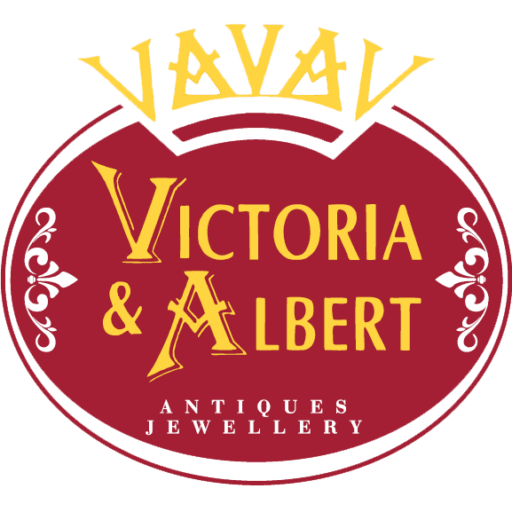Victorian
The Victorian era began and ended with Queen Victoria’s reign. She ascended the throne of England in 1837 at the tender age of 18 years. When she died in 1901 her 64- year reign had bore witness to many changes in society and indeed fashion and jewellery. In this era, horse-drawn carriages were replaced by the automobile, and candlelight by electricity. The latter was a major leap forward for jewellery artisans who had previously worked by candlelight with limited tools of trade.
Historians often refer to the Victorian era in 3 parts: Early Victorian or the Romantic Era, Mid Victorian, or the Grand era, and Late Victorian otherwise known as the Aesthetic era. Jewellery design of the Romantic era (until 1860) reflected society’s love for a young queen, and the love for her husband, Prince Albert.
Queen Victoria’s engagement ring was also her birthstone, a brilliant green emerald, set into a serpent motif, representing loyalty, longevity and love.
The use of birthstones instead of diamonds for an engagement ring was common practice in the Victorian era. However, when the South African diamond mines were discovered towards the late 1800’s diamonds became more widely available, and at least in Western society, remain the most popular choice for an engagement ring today.
Prince Albert’s death in 1861 bought on the Grand era. Queen Victoria had a passion for miniatures and after his passing she wore that of Price Albert set into a large diamond cross, and that of her second daughter Princess Alice from 1878. Queen Victoria also loved eye miniatures and for Christmas 1863 her gift to Princess Beatrice was a bracelet with a locket enclosing a miniature of Prince Albert’s eye, and a lock of the Queen’s hair.
Meanwhile her devoted subjects wore Whitby jet, pearls and onyx jewellery along with pieces made from human hair. The size of the jewels also increased significantly with large lockets and chains, worn high at the neck and brooches with a compartment for hair, and hand painted miniatures.
Their love and dedication for each other and their influence on jewellery inspired the name our store, Victoria & Albert Antiques.
The Aesthetic era from 1885 to 1901 saw a break away from the dark, often formidable shapes of the Grand Era to the softer, lighter shapes of the French influenced Art Nouveau. Many changes were taking place in society at this time: women were breaking away from their traditional roles as wives and housekeepers and were attending university, joining the workforce and fighting furiously for the right to vote. Fashionable women wore more naturalistic pieces with many new materials, such as horn being worked into hair combs, and jewellery taking on fluid shapes and soft curves. Colours were lighter with enamelled pinks and greens, and butterflies, birds and many other creatures featured in this beautiful era of jewellery design.
